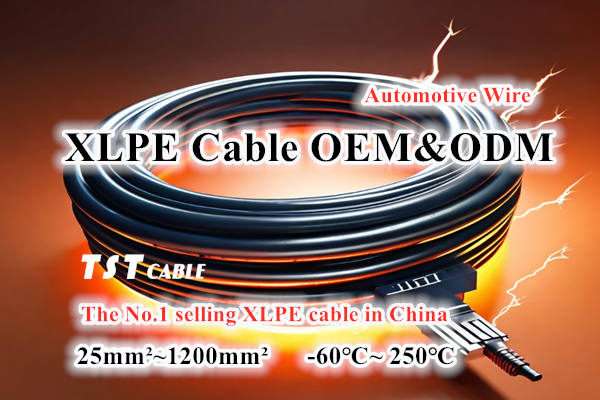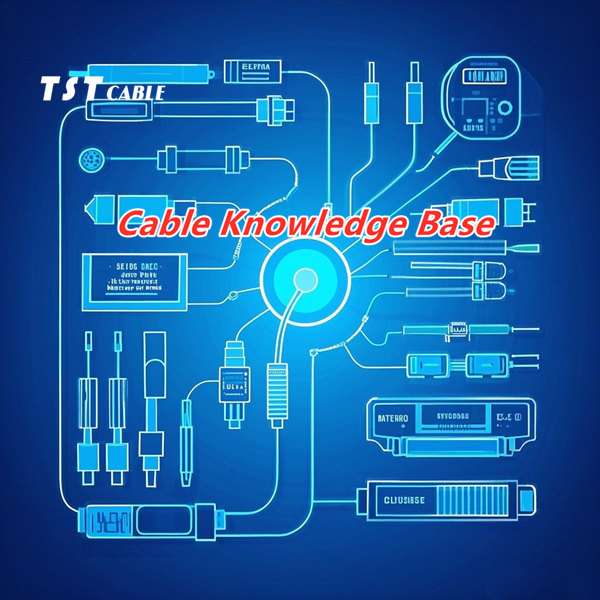The choice of cable insulation material has an important impact on the performance, applicable environment and service life of the cable. PVC (polyvinyl chloride), XLPE cable (cross-linked polyethylene) and XLPO (cross-linked polyolefin) are three common cable insulation materials, each with its own characteristics in performance and application. The following are the main differences between these three materials:

1. PVC cable (polyvinyl chloride cable)
Temperature range: PVC is generally suitable for a lower operating temperature range, generally between -10°C and 70°C. Some modified PVC can reach 90°C.
Mechanical properties: PVC has good flexibility and wear resistance, but its heat resistance and aging resistance are relatively poor.
Electrical properties: PVC has a high dielectric constant, resulting in a large capacitance effect, which may affect signal transmission.
Chemical stability: PVC has a certain resistance to most chemicals, but is easily soluble in some solvents.
Cost: PVC is an economical material with relatively low cost.
Environmental protection: PVC releases harmful gases such as hydrogen chloride when burned, so there are certain problems in environmental protection.
2. XLPE cable (cross-linked polyethylene cable)

Temperature range: XLPE is suitable for a higher operating temperature range, generally between -40°C and 90°C, and some special models can even reach 125°C.
Mechanical properties: XLPE has excellent mechanical strength and wear resistance, and is not easy to crack.
Electrical properties: XLPE has a low dielectric constant and a small capacitance effect, which is suitable for high-frequency signal transmission.
Chemical stability: XLPE has good resistance to most chemicals, including oils and solvents.
Cost: The cost of XLPE is slightly higher than PVC, but its performance advantages make it more competitive in many applications.
Environmental protection: XLPE produces less smoke and less toxicity when burned, which meets modern environmental protection standards.
3. XLPO cable (cross-linked polyolefin cable)
Temperature range: XLPO is suitable for a higher operating temperature range, generally between -60°C and 125°C, and some special models can even reach 150°C.
Mechanical properties: XLPO has excellent mechanical strength and wear resistance, and is not easy to crack.
Electrical properties: XLPO has a low dielectric constant and small capacitance effect, which is suitable for high-frequency signal transmission.
Chemical stability: XLPO has good resistance to most chemicals, including oils and solvents.
Cost: XLPO has a relatively high cost, but its high performance makes it very valuable in specific applications.
Environmental protection: XLPO produces less smoke and low toxicity when burned, which meets modern environmental protection standards.
Summary
PVC cable: Suitable for lower temperature ranges, low cost, but poor environmental performance.
XLPE cable: Suitable for higher temperature ranges, good mechanical and electrical properties, moderate cost, and good environmental performance.
XLPO cable: Suitable for extremely high temperature ranges, excellent mechanical and electrical properties, high cost, and good environmental performance.
Selecting the right insulation material requires comprehensive consideration of factors such as operating temperature, mechanical stress, electrical properties, chemical environment, and cost based on specific application requirements. For example, in applications with high temperature, high voltage, or high reliability, XLPE and XLPO are usually better choices; while in cost-sensitive applications with less demanding performance requirements, PVC may be a more suitable choice.
Also available in:
Arabic
English
Russian
Portuguese (Brazil)





